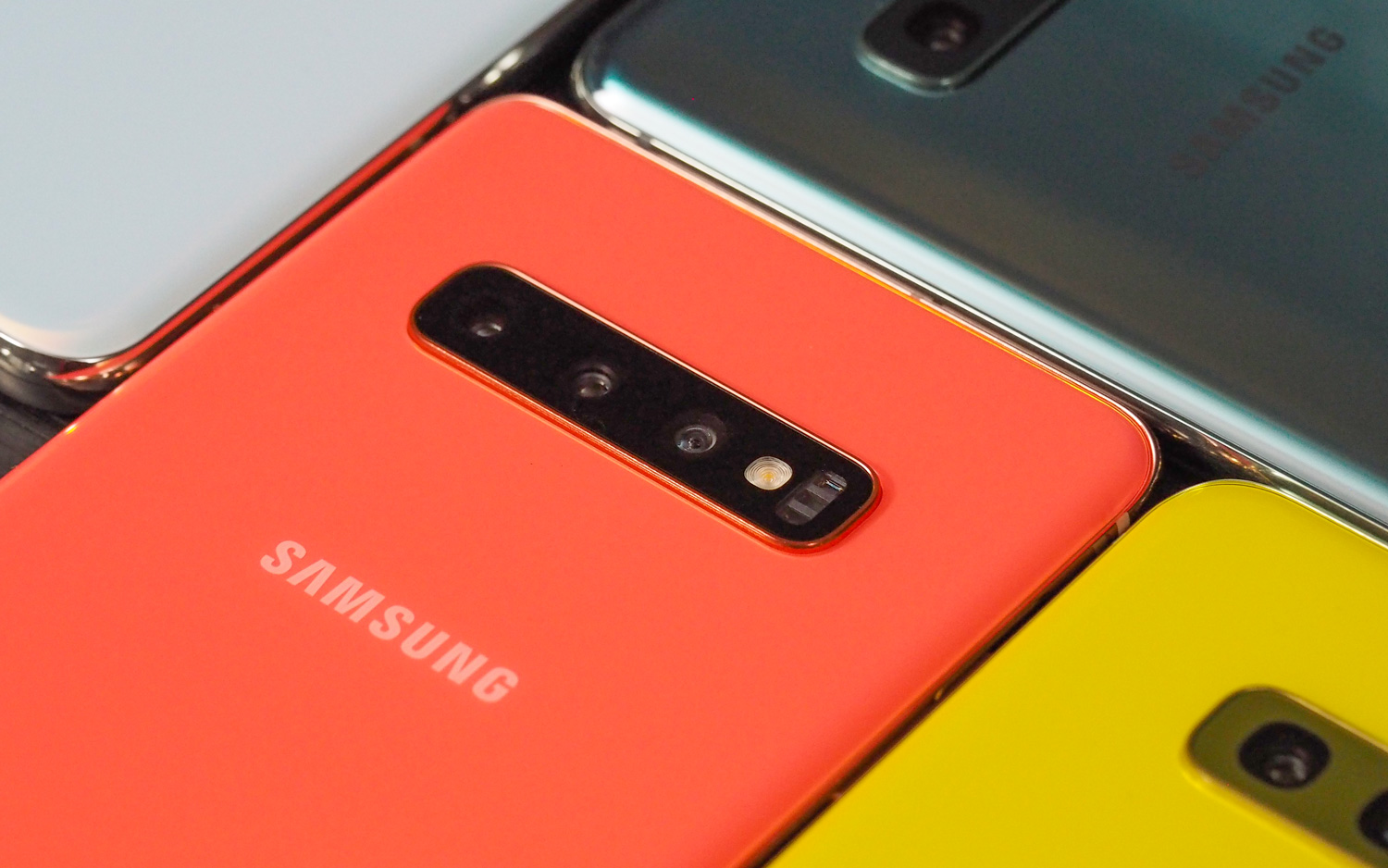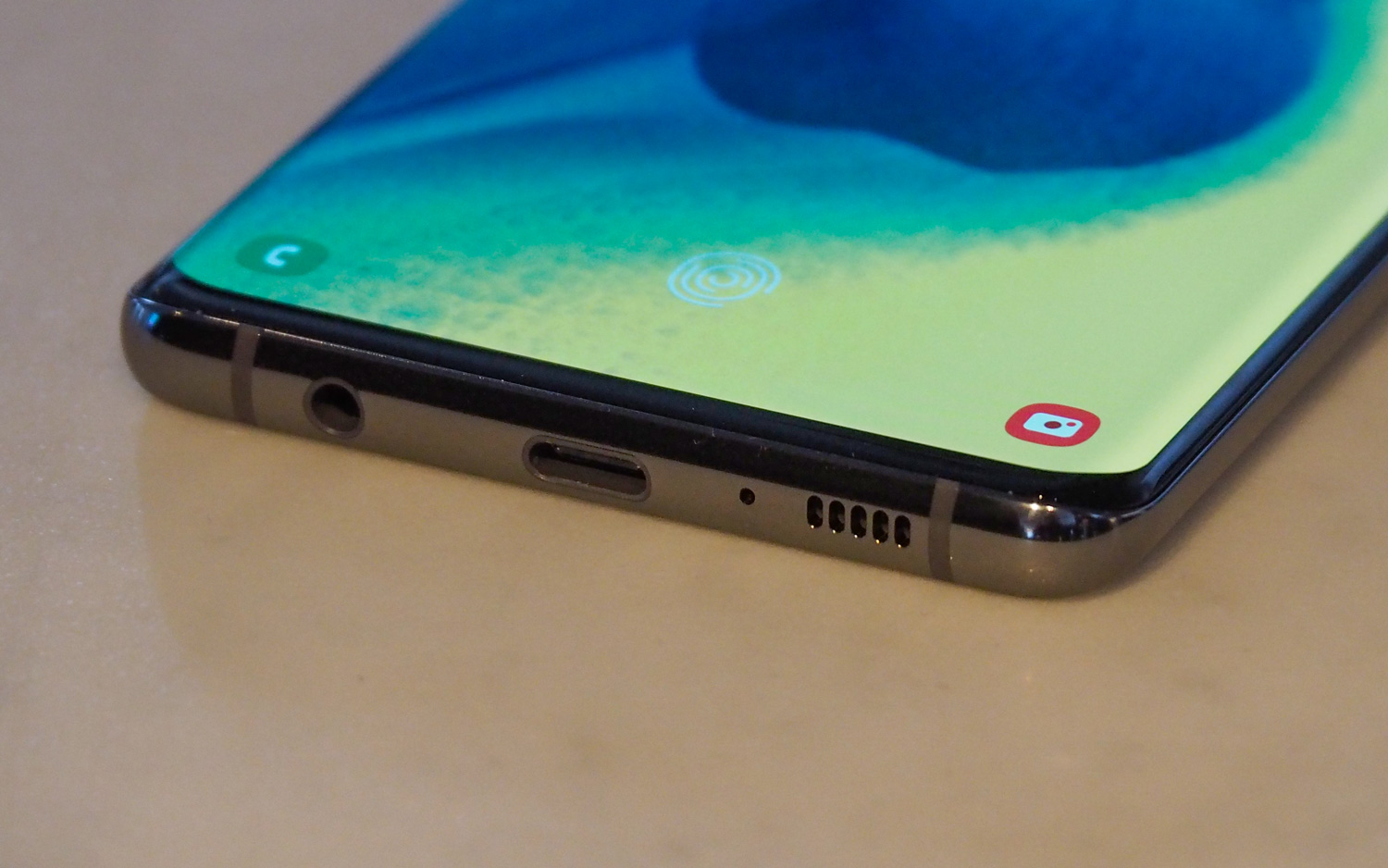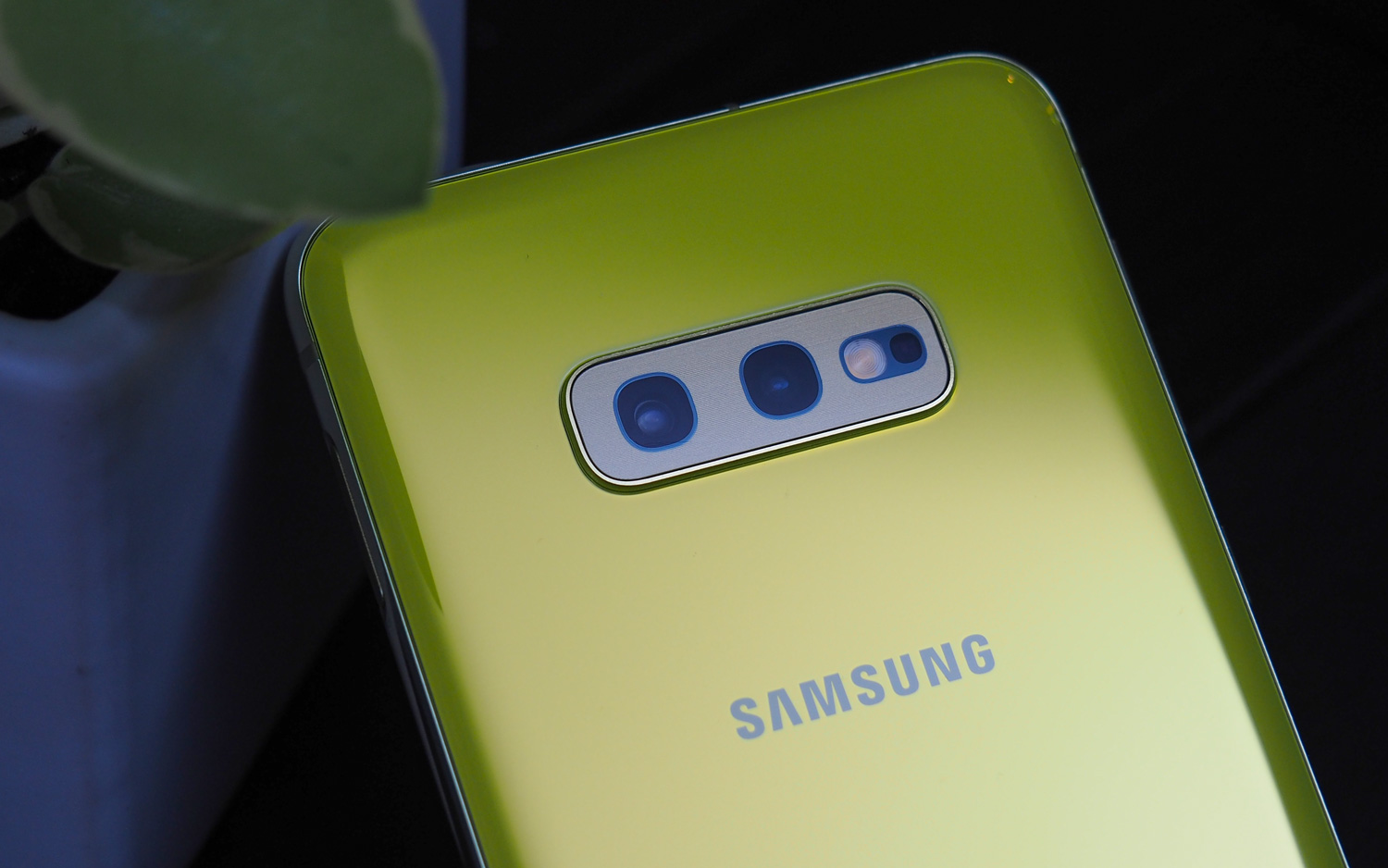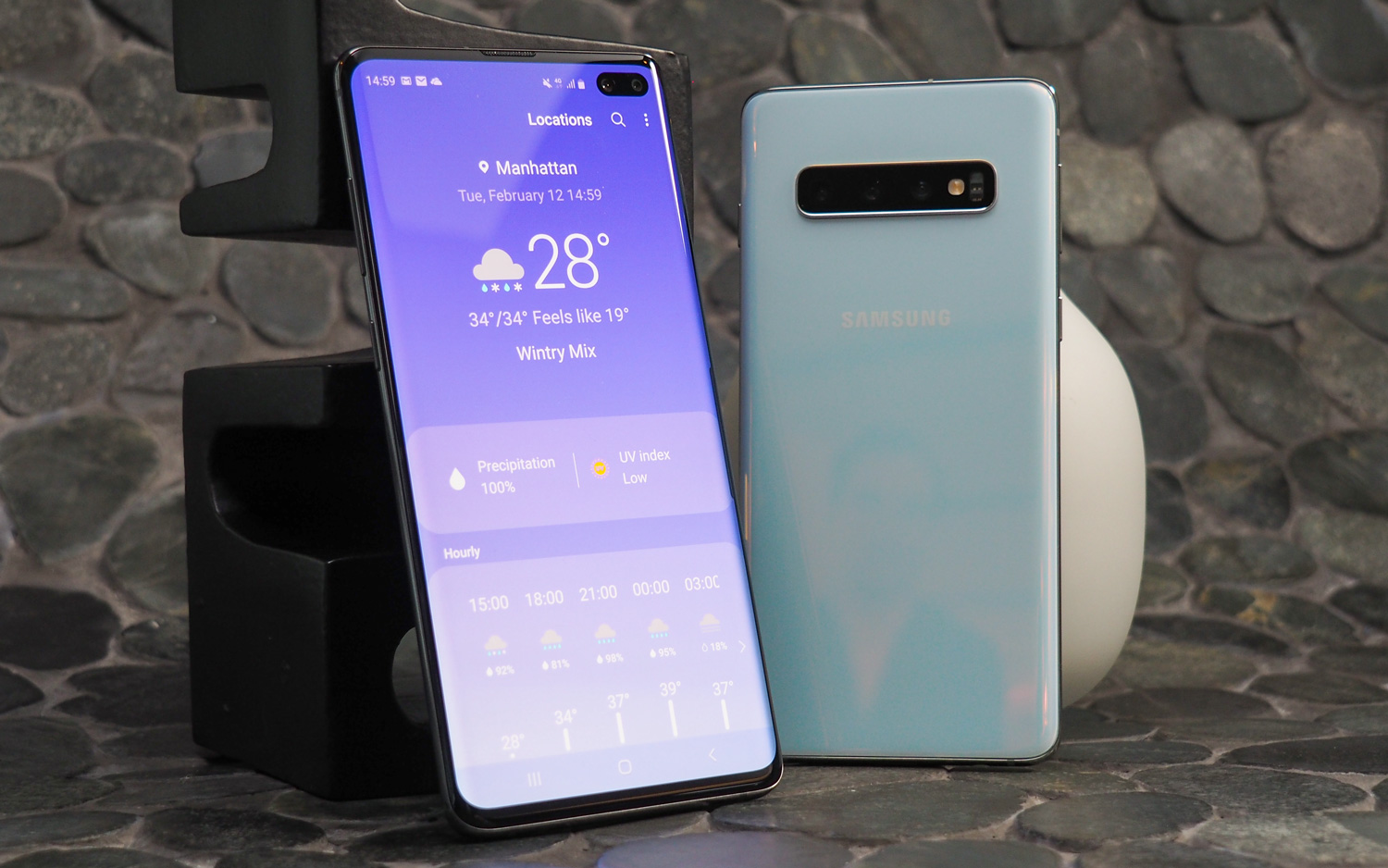Galaxy S10 vs. S10 Plus vs. S10e vs. S10 5G: What should you buy?
Here's what you need to know before deciding on what Galaxy S10 to buy

They're no longer Samsung's latest phones, but the four models in the Galaxy S10 series are still getting updates and can be easily found at retailers and carriers. Which means it's still important to know which model you want.
The Galaxy S10e is the most affordable and compact of the bunch; the Galaxy S10 is the standard flagship; and the Galaxy S10 Plus is the biggest and most premium version, save for the 6.7-inch Galaxy S10 5G.
These handsets share much in common, including Qualcomm's Snapdragon 855 processor, but there are some pretty big differences across the board too like cameras, displays, battery size, and of course, price. Here's how to choose the right Galaxy S10 for you.
Alternatively, if you want to get a newer Samsung phone, take a look at our Galaxy S20, Galaxy S21 and Galaxy S22 reviews to see how things have developed in the years since the S10 arrived.
Galaxy S10e vs. Galaxy S10 vs. Galaxy S10 Plus vs. Galaxy S10 5G: Specs compared
| Row 0 - Cell 0 | Galaxy S10e | Galaxy S10 | Galaxy S10 Plus | Galaxy S10 5G |
| Price | $749 at launch, now $599 | $899 at launch, now $749 | $999 at launch, now $849 | $1,299 |
| Display (Resolution) | 5.8 inches (full HD+) | 6.1 inches (quad HD+) | 6.4 inches (quad HD+) | 6.7 inches (quad HD+) |
| Rear Camera(s) | 16-MP ultrawide (f/2.2); 12-MP dual-pixel wide (f/1.5, f/2.4) | 16-MP ultrawide (f/2.2); 12-MP dual-pixel wide (f/1.5, f/2.4); 12-MP telephoto (f/2.4) | 16-MP ultrawide (f/2.2); 12-MP dual-pixel wide (f/1.5, f/2.4); 12-MP telephoto (f/2.4) | 16-MP ultrawide (f/2.2);12-MP dual-pixel wide (f/1.5, f/2.4); 12-MP telephoto (f/2.4); hQVGA 3D depth sensor |
| Front Camera(s) | 10-MP dual-pixel (f/1.9) | 10-MP dual-pixel (f/1.9) | 10-MP dual-pixel (f/1.9); 8-MP depth-sensing (f/2.2) | 10-MP dual-pixel (f/1.9); hQVGA 3D depth sensor |
| CPU | Snapdragon 855 (North America); Exynos 9820 (International) | Snapdragon 855 (North America); Exynos 9820 (International) | Snapdragon 855 (North America); Exynos 9820 (International) | Snapdragon 855 (North America); Exynos 9820 (International) |
| RAM | 6GB, 8GB | 8GB | 8GB, 12GB | 8GB |
| Storage | 128GB, 256GB | 128GB, 512GB | 128GB, 512GB, 1TB | 256GB, 512GB |
| microSD | Yes, up to 512GB | Yes, up to 512GB | Yes, up to 512GB | Yes, up to 512GB |
| Battery | 3,100 mAh | 3,400mAh | 4,100mAh | 4,500mAh |
| Battery Life (hrs:mins) | 9:41 | 10:19 | 12:35 | Not yet tested |
| Colors | Prism Black, Prism White, Prism Blue, Prism Green (except U.S.), Canary Yellow (except U.S.), Flamingo Pink (except U.K.) | Prism Black, Prism White, Prism Blue, Prism Green (except U.S.), Flamingo Pink (except U.K.) | Prism Black, Prism White, Prism Blue, Ceramic White, Ceramic Black, Prism Green (except U.S.), Flamingo Pink (except U.K.) | Majestic Black (Verizon exclusive), Crown Silver |
| Size | 5.6 x 2.75 x 0.3 inches | 5.9 x 2.77 x 0.3 inches | 6.2 x 2.91 x 0.3 inches | 6.4 x 3.0 x 0.3 inches |
| Weight | 5.29 ounces | 5.5 ounces | 6.17 ounces | 6.98 ounces |
Galaxy S10 price and availability
Following the launch of the Galaxy S20 series, the 5.8-inch Galaxy S10e started at $599 for 6GB of RAM and 128GB of storage. The 6.1-inch Galaxy S10 came in at $749 to $849 for 8GB of RAM and 128GB of storage to start. And the 6.4-inch Galaxy S10 Plus was priced at $849 for its bigger display with the same 8GB of RAM and 128GB of storage.
The Galaxy S10 5G cost $1,299. Unlike the other flavors of the Galaxy S10, the 5G variant only comes with 8GB of RAM and either 256GB or 512GB of storage.
Unfortunately, we'd recommend against buying the S10 5G at this stage. Not only is the device difficult to track down these days, but as a first-generation 5G device, it doesn't support all deployments of 5G that carriers are using, meaning it's not very future-proof. If 5G matters, you're better off looking at a newer Samsung phone like the Galaxy S20, Galaxy S21 or Galaxy S22.
Galaxy S10 design, size and display
The entire Galaxy S10 family sports Samsung's Infinity-O display design, using a hole punch on the top right side. It's fairly unobtrusive, but the S10 Plus and S10 5G have a wider hole punch to accommodate their dual front cameras, while the other phones have a smaller hole for a single front camera.
Get instant access to breaking news, the hottest reviews, great deals and helpful tips.

The key difference between the four models is size. The Galaxy S10e has a 5.8-inch, full-HD display, the Galaxy S10 a 6.1-inch, quad-HD panel, while the Galaxy S10 Plus packs a 6.4-inch, quad-HD panel. The very largest is the 6.7-inch S10 5G.

The screens on all four models benefit from Samsung's Dynamic AMOLED technology, which utilizes dynamic tone mapping for a wider range of a color and a reduction in blue light. However, all the S10 panels lack the 120Hz refresh rate of the newer S20, S21 and S22 series. The displays on the S10, S10 Plus and S10 5G all have curved left and right sides, but the panel on the S10e is flat.

The Galaxy S10 weighs a manageable 5.5 ounces, while the S10e is a remarkably light 5.3 ounces. The S10 Plus weighs 6.1 ounces, or 6.9 if you get one with a ceramic back. The S10 5G weighs 6.9 ounces too.
Galaxy S10 color options
The Galaxy S10, S10e and S10 Plus all come in multiple colors, including Prism Black, Prism White and Prism Blue, as well as Flamingo Pink (except in the U.K.) and Prism Green (except in the U.S.).

The Galaxy S10e comes in Canary Yellow, but not in the U.S. And the 5G model offers less exciting choices — Majestic Black, which is exclusive to Verizon, and Crown Silver.
For those willing to splurge, the S10 Plus comes in Ceramic Black and Ceramic White, but those special editions are available only if you opt for the top-end 512GB or 1TB models.
Galaxy S10 fingerprint sensor
The Galaxy S10, S10 Plus and S10 5G feature an ultrasonic fingerprint sensor embedded in the display, which makes it fairly easy to unlock these phones. Unlike the optical fingerprint sensors found in most smartphones, this ultrasonic reader provides slightly better accuracy and security by creating a 3D contour of your finger. It can also work when your finger is wet or damp.
However, the sensor can occasionally register a false negative, forcing you to touch the sensor again. You have to be careful not to tap too quickly. One hacker has claimed to have fooled the scanner using a 3D printed fingerprint, but for most users this sensor should be fine for unlocking the device.

One of the trade-offs for the cheaper Galaxy S10e is that it lacks an in-screen fingerprint reader; instead, Samsung embedded the sensor into the power button on the side of phone. Based on our testing, this sensor is more reliable than the under-screen one, though it is harder to interact with if the phone is lying flat, given its location.
Galaxy S10 cameras
As you might expect, the S10e has the fewest cameras, but it's no slouch. It offers the same 12-megapixel sensor as the other models, plus an ultrawide 16MP camera. And you get Samsung's improved Scene Optimizer feature for automatically recognizing up to 30 different scenes.

The Galaxy S10 and S10 Plus add a third camera to the back, a 12-MP, ƒ/2.4 lens that enables 2x optical zoom. (The S10e has to make do with digital zoom.) Then the S10 5G goes a step further, with a total of four lenses on the rear, thanks to the addition of a time-of-flight sensor for advanced spatial recognition.
On the front, the S10e, S10, S10 Plus and S10 5G all share the same 10-MP, ƒ/1.9 lens for selfies, but only the Galaxy S10 Plus plus packs a secondary depth sensor up front, which enables bokeh in selfies and the ability to colorize a subject while keeping the background black and white. The S10 5G also has a secondary front-facing sensor, but it's another time-of-flight camera, rather than a conventional one as in the S10 Plus.
Galaxy S10 specs, performance and 5G
Qualcomm's Snapdragon 855 processor powers all four of Samsung's S10 flagships in the U.S, while Samsung's own Exynos 9820 is the CPU elsewhere. Samsung says the 855's built-in AI helps predict and prepare for app launches, which should speed up performance, while improved support for the Unity graphics engine boosts gaming performance over previous Galaxy S generations.
Based on our Galaxy S10 benchmark testing, the phone did score impressively among its contemporaries, achieving 10,732 points on Geekbench 4, which was the highest score we had ever seen from an Android phone at the time of the S10's release. The iPhone XS from the year before was a bit faster in this test, but the S10 Plus pulled ahead on the 3DMark graphics test. You'll obviously see better performance from Samsung's newer Galaxy S phones, but the S10 range is still plenty fast enough to consider purchasing today.

On the Galaxy S10e, you start with 6GB of RAM but can opt for 8GB, and you can choose from 128GB or 256GB of storage. The Galaxy S10 comes with 8GB of RAM and either 256GB or 512GB of storage. The S10 Plus tops out at 12GB of RAM and 1TB of storage, making it one of the first smartphones to reach those heights in terms of memory. And the S10 5G sits somewhere between all of those, with 8GB of RAM and the option of either 256GB or 512GB of storage.
The one area where the Galaxy S10 5G unsurprisingly pulls ahead is its data performance. We've speed tested the phone in Chicago, which was one of the first launch cities for Verizon's 5G network, and we have seen speeds exceed 1Gbps. And we were amazed as the S10 5G downloaded a 33-minute, 158MB episode of Netflix’s Nailed It in an astonishing 5.6 seconds.
Galaxy S10 battery life and PowerShare
No prizes for guessing that the Galaxy S10e, the smallest phone of the range, has the smallest battery of the bunch at 3,100 mAh, but that doesn't mean it offers the least battery life; that's because it also has the smallest screen at 5.8 inches.

The Galaxy S10 features a generous 3,400 mAh battery, while the Galaxy S10 Plus boasts a huge 4,100 mAh battery. By comparison, the Galaxy S9 Plus had a 3,500 mAh battery. In our battery tests, the Galaxy S10 Plus lasted a whopping 12 hours and 35 minutes, which is one of the best times we've seen from a flagship within the last couple of years. The phone also once featured in our list of the best phone battery life.
The regular Galaxy S10 endured for a very good 10:19, while the Galaxy S10e lasted a solid but unspectacular 9:41 on our battery test. For a comparison against the newer S20 devices, the standard Galaxy S20 fared just 9 hours and 31 minutes, while the Galaxy S20 Plus lasted a much better 10 hours and 31 minutes and the Galaxy S20 Ultra hit an epic 12:03. (All S20 tests were performed with each phone set to 60Hz mode.)
Each of the four Galaxy S10 phones offer Samsung's PowerShare feature, which allows users to charge other phones or Samsung's new Galaxy Buds wirelessly. You just place the other handset or buds on the back of the phone.
Bottom line
Given all the differences between the four models, which version of the S10 should you consider? Here's how we break it down after testing the four phones.
Get the Galaxy S10e if you want a compact phone that's easy to use with one hand but you don't want to sacrifice performance or pay a high price. The regular Galaxy S10 is the phone to get if you want a fairly big screen, a fingerprint reader in the display and a third rear camera for ultra-wide shots.
The Galaxy S10 Plus is the flagship to buy if you want a big display and battery and a second front camera, plus the option for a crazy amount of RAM and storage. And as for the Galaxy S10 5G, although it offered impressive performance at the time, newer 5G phones have it beaten in terms of connectivity and affordability — so skip it.
However, don't forget to check out newer options, both in terms of Android phones generally and Samsung phones. The Galaxy S20, Galaxy S21 and Galaxy S22 series have all improved on various S10 features, and in the case of the S20 and S21, may not cost that much more since they're no longer Samsung's latest phones. Equally, looking at Samsung's newer mid-priced phones like the Galaxy A53 can let you get newer features and more Android updates than going for an older premium model, so make sure to check out all your options before committing to buy something.
Mark Spoonauer is the global editor in chief of Tom's Guide and has covered technology for over 20 years. In addition to overseeing the direction of Tom's Guide, Mark specializes in covering all things mobile, having reviewed dozens of smartphones and other gadgets. He has spoken at key industry events and appears regularly on TV to discuss the latest trends, including Cheddar, Fox Business and other outlets. Mark was previously editor in chief of Laptop Mag, and his work has appeared in Wired, Popular Science and Inc. Follow him on Twitter at @mspoonauer.

